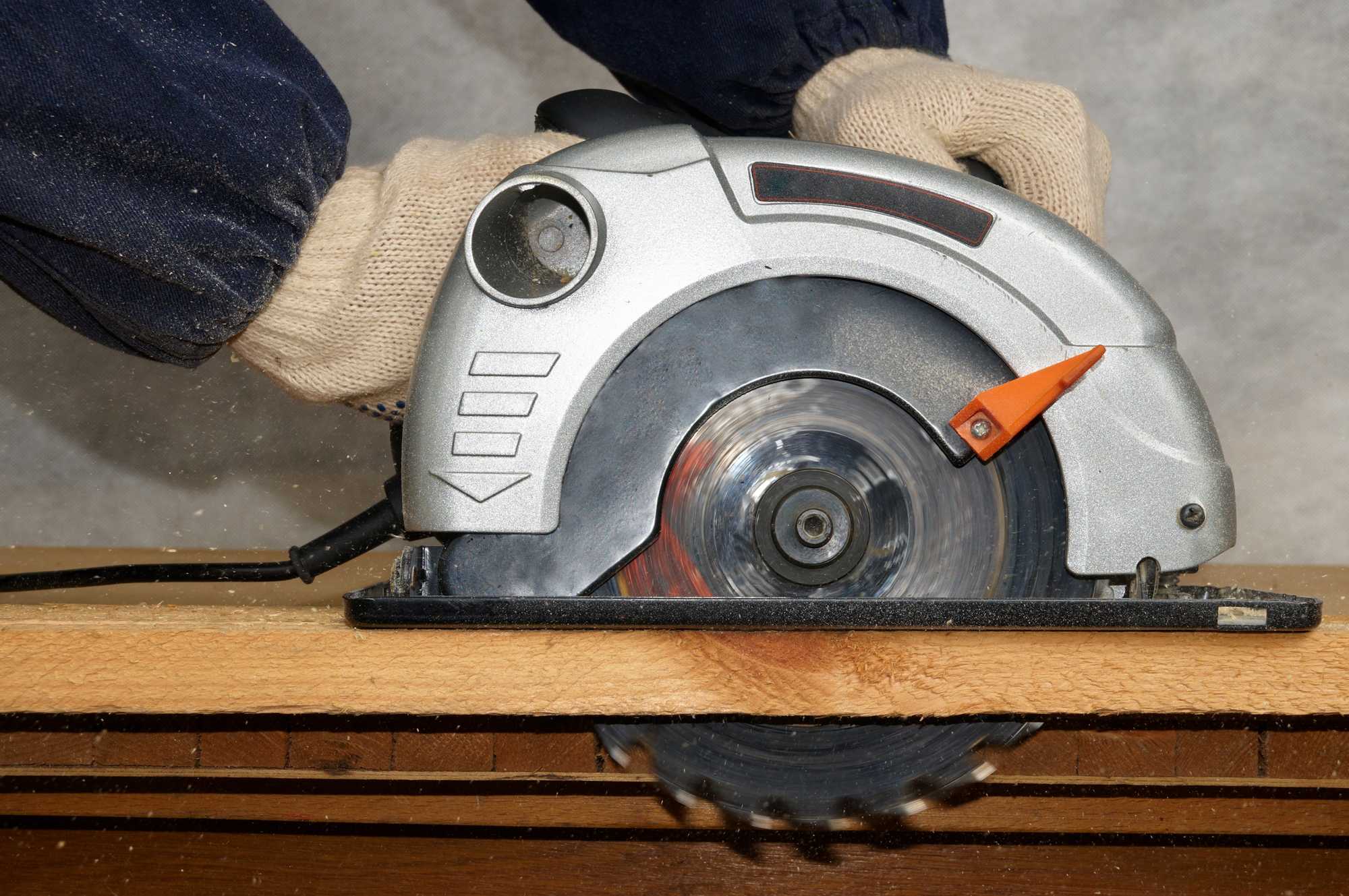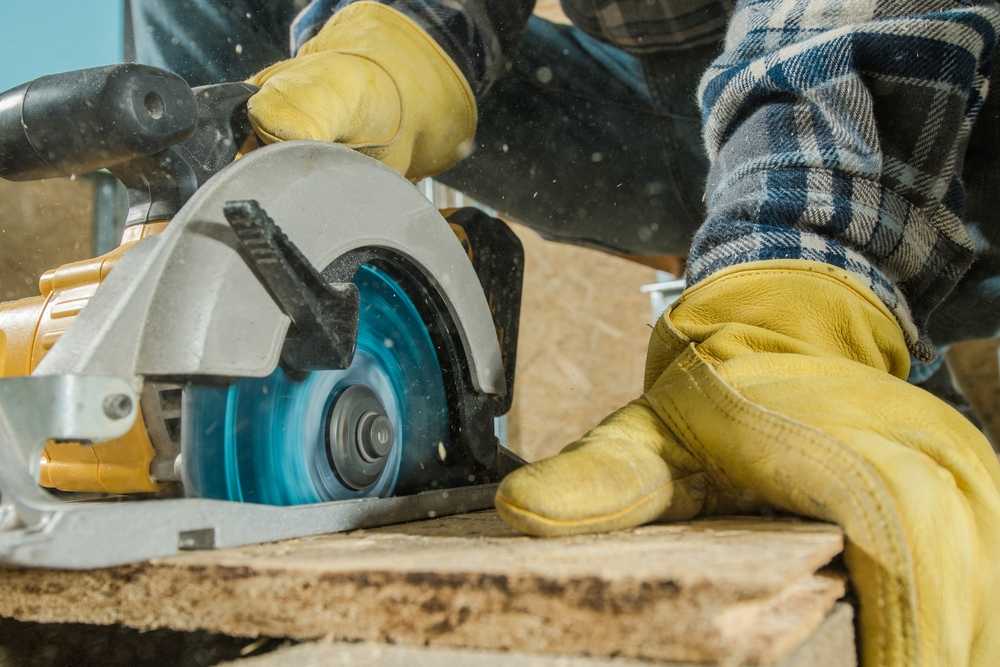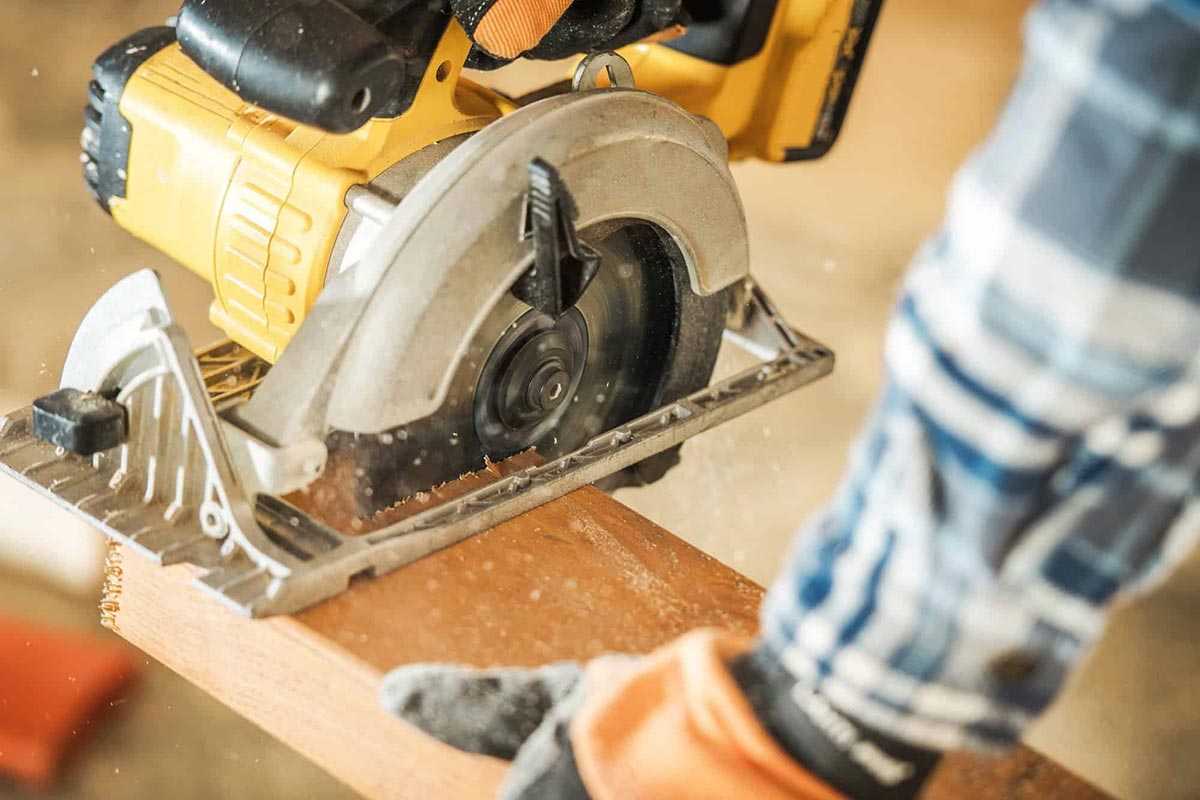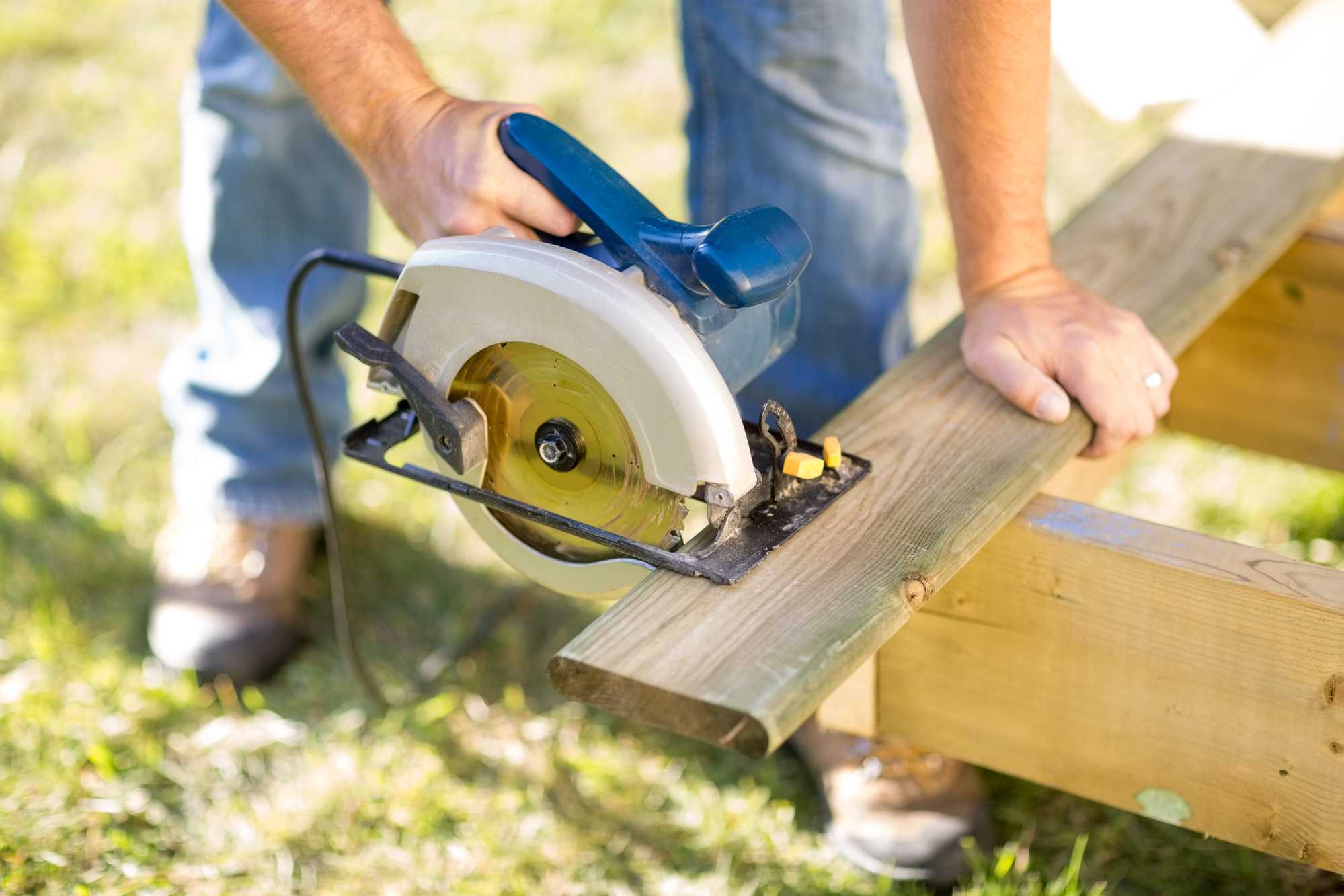The Best Corded Circular Saws

In the market for a corded circular saw? We've rounded up the best of the best for you! Read our no-nonsense reviews to find the right one for you.
Corded circular saws have lost some market share to their cordless cousins, but they still have a number of advantages. They usually provide more torque, making it easier to cut through thicker or harder wood. You won’t worry about running out of battery juice in the middle of a project. And, feature-for-feature, they’re typically considerably cheaper. As long as you know you’ll have an electrical outlet nearby, a quality corded saw will serve you well for many years.
I’ve put together a review of 7 of the best tools on the market today. If you’re in a hurry and just want to know what to buy, I recommend the following:
- Best corded circular saw for the money: The DeWalt DWE575SB is a great all-purpose corded circular saw. It’s got the solid build quality you expect from DeWalt, and enough power to get through all DIY or home improvement tasks.
- Best general-purpose corded circular saw: The Makita 5007MG hits the sweet spot of features and affordability.
- Best worm-drive corded circular saw: The Skilsaw SPT77WML-01 is an excellent worm-drive saw. It’ll be perfect if you appreciate the extra torque a worm-drive circular saw gives you.
- Runner-up worm-drive corded circular saw: The DeWalt DWS535B is a solid entry in the worm-drive category, albeit a heavy one at nearly 14 pounds.
- Best blade-left corded circular saw: The Skilsaw SPT67M8-01 is a direct-drive saw with the blade on the left. If you’re used to blade-left saws, or you want the improved visibility they offer, this is an excellent choice.
- Best budget corded circular saw: The Porter-Cable PCE310 is no more expensive than many other budget saws. But it has more solid construction than most of them, and so I think it represents the best value for occasional or light users.
Features to Look For
I’ve tried to highlight the most important features here, but you can find more information in our complete guide to choosing a circular saw.
Related: Choosing a Circular Saw: A Complete Buyer's Guide
Blade Diameter
The most versatile blade size for corded circular saws is 7 1/4”. This will let you handle any typical material you’ll use in home improvement or DIY projects. It also gives you a large number options when it comes to buying saw blades for specific jobs. You can learn more at our complete guide to circular saw blades.
Circular saws also come in smaller blade sizes, including a couple in the list below. The smaller blade limits the thickness of material, but these saws may be smaller and lighter. This makes them more comfortable to use for extended periods of time, and they’re often cheaper as well.
If you’ll only be sawing thinner material (up to the thickness of a 2x4), you can consider the smaller blades. But if you have heavier demands of your circular saw, you’ll want to stick to a 7 1/4” blade.
Blade Side
Many circular saws have the blade mounted on the right as you hold the saw in front of you. This is known as a “blade-right” design. While this design works just fine, it does have one drawback. Since most people push the saw with their right hand, it puts the blade on the opposite side of the saw from you when you’re using it. This can make it tricky to see the blade to ensure you are cutting straight along your intended line. One solution is to push the saw with your left hand, but many people find that awkward.
Another solution is to buy a saw with the blade mounted on the left (a “blade-left” design). That way, you can easily check to make sure you’re on course as you saw. I’ve called out some blade-left saws below. If you’re not sure which you prefer, consider borrowing one of each before you make a purchase.
The 7 Best Corded Circular Saws
The saws below, in my opinion, are the best ones on the market today. But what’s best for one person might not be best for another. So please read my reviews below to find the one that’s best for you.
DeWalt DWE575SB 7 1/4" Circular Saw
The DWE575SB is a fairly basic corded circular saw, but it has most of the features you’ll want for common DIY tasks. Its 7 1/4” blade allows it to cut up to 2 9/16” when vertical and a full 2” at 45°. And at 8.8 lbs, it’s lighter than much of the competition, so it won’t tire you out as fast.
The integrated dust blower on this saw does a good job of keeping your workpiece clear of sawdust. And it has an electric brake to help slow the blade quickly after a cut, improving safety. Note, though, that the brake isn’t instantaneous, so the blade will still spin for a few seconds.
Some purchasers have noted that the saw needs to be adjusted before its first use in order to ensure a precisely vertical blade. And this isn’t clearly called out in the manual, so look up the adjustment mechanism and make sure you align that blade.
Positives
- Electric brake to stop the blade
- Lighter than many other models
- Dust blower effective at removing dust
Negatives
- Brake does not stop blade immediately
- No safety switch
Makita 5007MG 7 1/4" Circular Saw
The 5007MG is a great mid-range corded circular saw. It has a magnesium shoe so it’s relatively light at 10.1 pounds. The build quality is solid and it operates smoothly, as you would expect from a Makita tool.
The saw can cut a respectable 2 1/2” with the blade vertical, and 1 3/4” when beveled to 45°. It can bevel up to 56° and has positive stops at 22.5° and 45°. A dust blower on the front does a good job of clearing sawdust, but there is no option to connect a shop vac or other dust collector.
This model does not include a brake, so you’ll need to wait for the blade to stop spinning on its own before adjusting the saw. Makita offers the same saw with a brake as the model 5007MGA, but be prepared to pay a fair bit for the feature.
The only real knock against this saw is that the blade guard can be finicky. It works well for vertical cuts, but people have reported problems with bevel cuts. The blade guard can sometimes snag when cutting bevels, requiring you to manually pull it up to clear the workpiece. This annoyance may or may not be a deal-breaker for you, but it’s worth bearing in mind.
Positives
- Relatively light
- Smooth operation
- Effective dust blower on front
Negatives
- No electric brake
- Blade guard can be finicky on some cuts
Skilsaw SPT77WML-01 Worm-Drive 7 1/4" Circular Saw
Skilsaw has been making circular saws since they first invented them back in 1924. This model is their latest iteration of a worm-drive saw. The gears in a worm-drive saw deliver more torque from the motor to the blade. That torque helps you saw through thicker and harder wood than a direct-drive (or “sidewinder”) saw can handle.

This saw is heaver than most direct-drive saws at 11.5 pounds. But it is actually easier to handle than some lighter saws. That’s because the motor is in line with the blade, so you tend to just push the saw straight forward rather than needing to adjust its direction constantly.
The SPT77WML doesn’t cut quite as deep as some other saws in this roundup. It’ll cut 2 3/8” with the blade vertically and 1 15/16” at a 45° bevel. It can cut bevels up to 53° and has a positive stop at 45°.
One thing to note is that this saw will only accept blades that have a diamond-shaped knockout in the center. Most replacement blades you’ll come across have such a knockout, but you’ll want to make sure.
Positives
- Lots of torque for cutting difficult material
- Good build quality
- Blade-left design provides good visibility
- Easy to track straight cut lines
Negatives
- Heavier than most direct-drive saws
DeWalt DWS535B Worm-Drive 7 1/4" Circular Saw
The DeWalt DWS535B is one of two worm-drive saws that made this list. The gears in a worm-drive saw deliver more torque to the blade than direct-drive models. If you’ll need to cut through thick or very hard wood, that extra torque can come in handy.

As with most worm-drive saws, the blade on this model is on the left. If you’re right handed, this improves visibility of the blade. That in turn can make it easier to follow a cut line on your workpiece.
The DWS535B can manage bevel cuts up to 53°. With the blade vertical, it can cut up to 2 7/16” deep, and up to 1 7/8” at 45°. It features positive detents at two angles: 22.5° and 45°.
The biggest downside to this saw is its weight. At 13.8 lbs, you’ll need some muscle to move it around all day. Unless you really need the torque of a worm-drive saw, a direct-drive model might be a better choice.
Positives
- Lots of torque for cutting thick or hard wood
- Blade-left design provides good visibility of cut lines
- Narrower than direct-drive saws, easier to get into tight spaces
Negatives
- Very heavy, even for a worm drive saw
Skilsaw SPT67M8-01 Southpaw 7 1/4" Circular Saw
The SPT67MB is another circular saw from Skilsaw, the company that first invented this type of tool. It’s a conventional direct-drive (“sidewinder”) model. Its blade-left design provides better visibility of the blade and cut line for right-handed users.

This model’s depth of cut is fairly middle-of-the-pack for corded circular saws. It’ll cut up to 2 7/16” deep with the blade vertical, and 1 7/8” at a 45° angle. It can bevel up to 56° and has a positive stop at 45°.
There’s no electric brake on this saw, so you’ll need to let it spin down after each cut. It takes normal 7 1/4” circular saw blades, and unlike its worm-drive cousin mentioned above, you don’t need to punch out the diamond-shaped knockout. Note that blade labels are usually printed assuming they’ll go on a blade-right saw, so pay attention when installing a replacement blade. You may need to install it with the label facing in so it will spin in the correct direction!
Positives
- Blade-left design for better blade visibility
- Fairly lightweight for ease of use
Negatives
- No electric brake
- Magnesium shoe may not be as strong as steel one
Bosch CS10 7 1/4" Circular Saw
The Bosch CS10 is a solid mid-range corded circular saw. It doesn’t have any fancy features like a laser guide. But it has decent build quality and enough power to handle most DIY projects.

At 10.2 pounds, it’s not so heavy that you’ll get tired from using it all day. It’s got a respectable 2 7/16” of depth with the blade vertical, and 1 7/8” with the blade at 45°. It can bevel up to 56° and has positive stops at 22.5° and 45°.
Some customers report receiving units with a plastic shoe, but newer reviewers say it comes with a magnesium shoe. The magnesium one is much less prone to warping, although it can still be damaged if you drop the saw.
Positives
- Not as heavy as some competitors
- Quality blade included in package
- Rafter hook for hanging when not in use
Negatives
- Plastic adjustment levers could break with rough use
Porter-Cable PCE310 7 1/4" Circular Saw
The PCE130 is a good budget circular saw that still lets you use common 7 1/4” blades. It’s lighter than many of its competitors at 9 pounds. But it has a magnesium shoe that won’t flex as much as some of its competition among budget circular saws.

It can cut up to 2 1/2” deep with the blade vertical, or 1 7/8” with the blade at 45°. The saw can bevel up to 55° and has positive stops at 22.5° and 45° angles.
The motor spins the blade at 5500 rpm with no load, which is also better than many other saws in this class. It’ll have enough power for all common DIY or home improvement projects. It probably isn’t a great choice if you’ll be cutting very thick or hard wood, though.
Positives
- Cheaper than many competitors
- Magnesium shoe won’t warp or bend
- Light weight for more comfortable extended use
Negatives
- Not as powerful as more expensive models
- Markings are hard to read accurately
Conclusion
Any of the saws listed above will make the majority of cuts the average DIYer or home improvement buff needs. I hope I’ve helped you find the one that meets your needs the best. If you’re still not sure, head over to my complete guide to choosing a circular saw for a more in-depth look at all the features you might care about.






